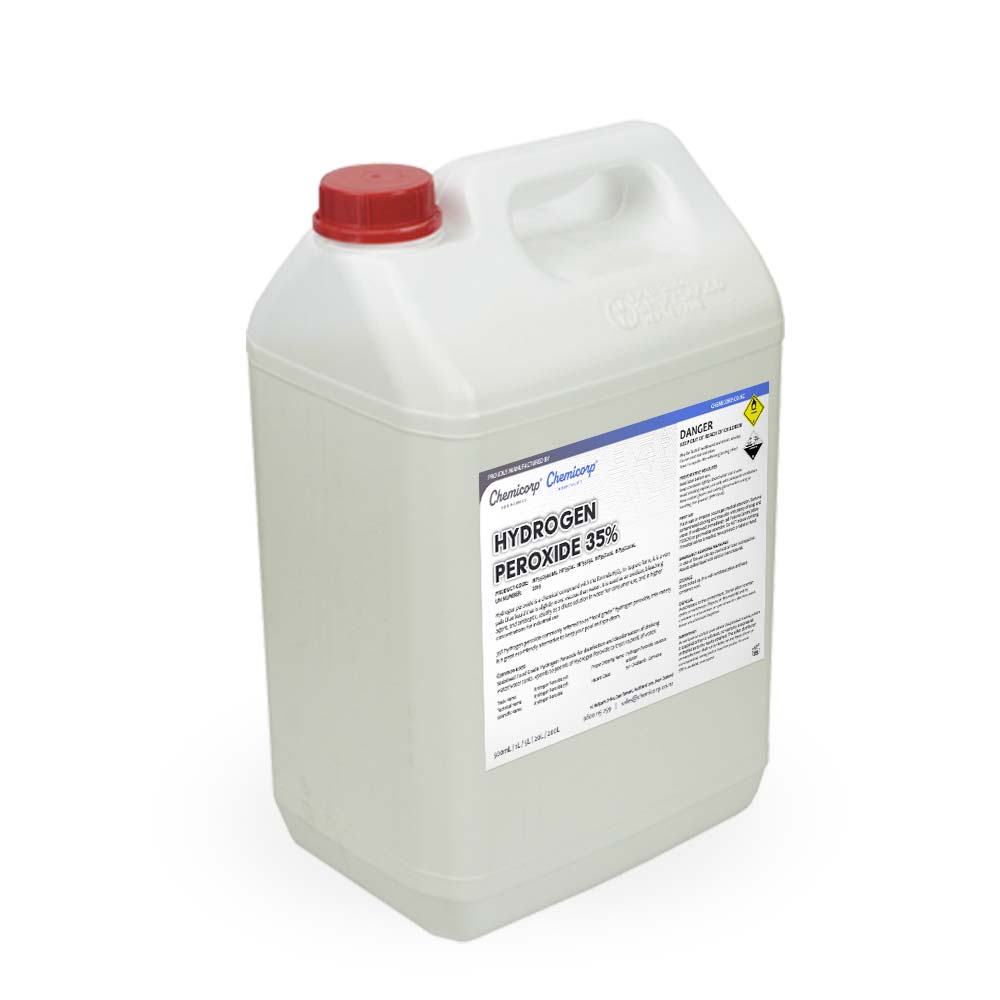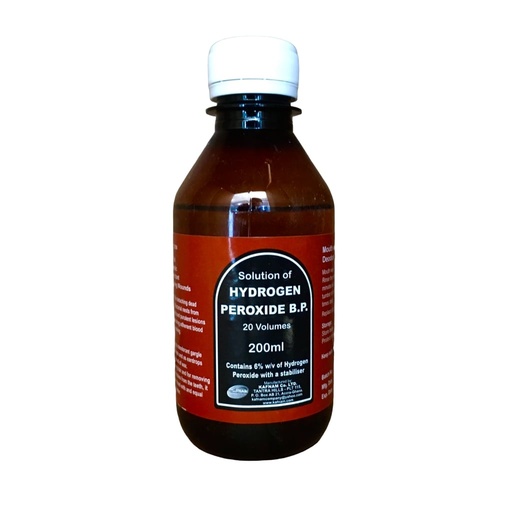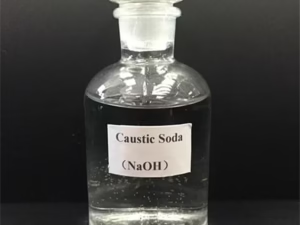Description
Hydrogen Peroxide: The Versatile Solution in Your Home
Hydrogen peroxide (H₂O₂) is a common household staple, often found in that familiar brown bottle under the sink. But beyond being just a disinfectant, this simple chemical compound boasts a surprising range of uses, from cleaning and whitening to even some health and beauty applications. Let’s take a closer look at what makes hydrogen peroxide so versatile and how to use it safely.
What is Hydrogen Peroxide?
Chemically, hydrogen peroxide is very similar to water (H₂O), but with an extra oxygen atom. This extra oxygen makes it a powerful oxidizing agent, meaning it readily reacts with other substances. This reactivity is the key to its many applications. The common household solution is typically a 3% concentration, diluted with water. Higher concentrations exist, but these are primarily for industrial or laboratory use and should be handled with extreme caution.
Around the House:
- Disinfecting: Hydrogen peroxide is a great disinfectant for surfaces like countertops, cutting boards, and even toothbrushes. Spray the surface and let it sit for a few minutes before wiping clean.
- Laundry: A cup of hydrogen peroxide added to your laundry can help brighten whites and remove stains.
- Cleaning Grout: Apply a paste of baking soda and hydrogen peroxide to grout lines, let it sit, and then scrub for a brighter, cleaner bathroom.
- Mold Removal: Hydrogen peroxide can help kill mold and mildew, especially in bathrooms.
Health and Beauty (Use with Caution):
- Mouthwash: Diluted hydrogen peroxide can be used as a mouthwash to kill bacteria and freshen breath. Important: Do not swallow it.
- Whitening Teeth: Some people use hydrogen peroxide to whiten teeth. However, it’s crucial to consult with a dentist before trying this, as overuse can damage enamel.
- Treating Minor Cuts and Scrapes: Hydrogen peroxide can disinfect minor cuts and scrapes. However, some experts now recommend against using it for this purpose, as it can hinder the healing process. A better option for wound cleaning is often simply soap and water.
Safety First!
While hydrogen peroxide is generally safe when used properly, it’s important to keep these safety tips in mind:
- Concentration Matters: Stick to the 3% solution for household and personal use. Higher concentrations are dangerous and can cause burns.
- Eye Protection: Avoid getting hydrogen peroxide in your eyes. If contact occurs, rinse immediately with water.
- Storage: Store hydrogen peroxide in a cool, dark place, away from children and pets. The brown bottle helps prevent it from breaking down in sunlight.
- Mixing: Never mix hydrogen peroxide with other cleaning products, especially bleach, as this can create toxic fumes.
- Ingestion: Hydrogen peroxide is toxic if ingested. Seek medical attention immediately if swallowed.
- Skin Irritation: Prolonged contact with skin can cause irritation. Wear gloves if you’ll be using it for an extended period.
The Bottom Line:
Hydrogen peroxide is a valuable and versatile tool for cleaning, disinfecting, and even some health and beauty applications. By understanding its properties and using it safely, you can harness its power to keep your home clean and your life a little easier. Remember to always prioritize safety and consult with a professional if you have any concerns.
Option 2: Focus on the Science and Chemistry
Unlocking the Power of H₂O₂: A Deeper Dive into Hydrogen Peroxide
Hydrogen peroxide (H₂O₂) is more than just a household disinfectant; it’s a powerful chemical compound with fascinating properties that make it useful in a wide array of applications, from industrial bleaching to rocket propulsion. Understanding its chemical structure and reactivity is key to appreciating its potential and using it effectively.
The Chemistry Behind the Fizz:
The chemical formula H₂O₂ reveals that hydrogen peroxide is structurally similar to water (H₂O), but with an additional oxygen atom. This seemingly small difference has significant implications. The extra oxygen atom creates a weak and unstable bond, making hydrogen peroxide highly reactive. It readily decomposes into water (H₂O) and oxygen (O₂), a reaction often catalyzed by light, heat, or the presence of certain metals. This decomposition is what causes the bubbling or fizzing you see when hydrogen peroxide comes into contact with a wound or organic matter.
Oxidizing Agent Extraordinaire:
The power of hydrogen peroxide lies in its role as a strong oxidizing agent. Oxidation involves the transfer of electrons from one substance to another. Hydrogen peroxide readily accepts electrons, causing other substances to lose them – essentially, oxidizing them. This oxidizing ability is the basis for its disinfecting, bleaching, and other properties.
Applications Beyond the Bottle:
- Disinfection: Hydrogen peroxide kills microorganisms by oxidizing their cellular components, disrupting their structure and function. This makes it an effective disinfectant for surfaces, wounds, and even water treatment.
- Bleaching: In the textile and paper industries, hydrogen peroxide is used as a bleaching agent. It oxidizes colored compounds, breaking them down into colorless substances.
- Rocket Propulsion: High-concentration hydrogen peroxide can be used as a monopropellant in rockets. Its decomposition releases a large amount of energy, propelling the rocket forward.
- Chemical Synthesis: Hydrogen peroxide is a valuable reagent in various chemical syntheses, used to produce a wide range of compounds.
- Environmental Remediation: It can be used to treat contaminated soil and water, breaking down pollutants through oxidation.
Stability and Decomposition:
The instability of hydrogen peroxide is a key factor to consider. Factors that accelerate its decomposition include:
- Light: Exposure to light breaks down hydrogen peroxide. This is why it is stored in opaque bottles.
- Heat: Higher temperatures increase the rate of decomposition.
- Catalysts: Certain metals (like iron, copper, and manganese) and enzymes (like catalase) act as catalysts, speeding up the decomposition process.
To improve stability, commercial hydrogen peroxide solutions often contain stabilizers that inhibit decomposition.
Safety Considerations:
While diluted hydrogen peroxide (3%) is generally safe for household use, higher concentrations pose significant risks.
- Corrosive: Concentrated hydrogen peroxide is highly corrosive and can cause severe burns to the skin, eyes, and respiratory system.
- Explosive: In high concentrations, hydrogen peroxide can be explosive, especially when mixed with certain substances.
- Handling: Always wear appropriate personal protective equipment (PPE), such as gloves and eye protection, when handling hydrogen peroxide.
Conclusion:
Hydrogen peroxide is a fascinating chemical compound with a wide range of applications stemming from its powerful oxidizing properties. From disinfecting surfaces to powering rockets, its versatility is undeniable. Understanding its chemistry and handling it safely are crucial for harnessing its potential.
Option 3: Historical Perspective and Development
A History of Hydrogen Peroxide: From Chemical Curiosity to Household Staple
Hydrogen peroxide, the ubiquitous solution found in medicine cabinets worldwide, has a rich and fascinating history. From its initial discovery as a chemical curiosity to its widespread use in various industries, its journey reflects the progress of scientific understanding and technological innovation.
Early Discoveries:
While Louis Jacques Thenard is generally credited with discovering hydrogen peroxide in 1818, he wasn’t the first to observe its effects. Several chemists had noticed unusual behavior with peroxides before him. Thenard, however, was the first to isolate and identify it as a distinct chemical compound, which he initially called eau oxygénée (oxygenated water). He produced it by reacting barium peroxide with nitric acid.
Challenges in Production:
For many years, producing hydrogen peroxide was a costly and inefficient process. The original methods, like Thenard’s, used barium peroxide, which was expensive and produced barium sulfate as a byproduct, creating disposal challenges. This limited its widespread use.
Industrialization and Improved Production:
The late 19th and early 20th centuries saw significant advancements in the production of hydrogen peroxide. The development of electrolytic processes, particularly the Weissenstein process, provided a more efficient and cost-effective way to manufacture it. This involved the electrolysis of sulfuric acid, leading to the formation of persulfuric acid, which could then be hydrolyzed to produce hydrogen peroxide. These advancements paved the way for its widespread industrial use.
The Rise of Household Use:
The early 20th century also saw the rise of household use of diluted hydrogen peroxide solutions (typically 3%). Its antiseptic properties made it a popular choice for disinfecting wounds and cleaning surfaces. The development of stabilized solutions, which prevented rapid decomposition, further contributed to its popularity and practicality for home use.
World War II and Beyond:
World War II spurred further research and development in hydrogen peroxide production, particularly for use as a rocket propellant by the Germans. High-concentration hydrogen peroxide became crucial for powering certain types of rockets and submarines.
After the war, its use expanded into various industrial applications, including bleaching paper and textiles, chemical synthesis, and environmental remediation.
Modern Production Methods:
Today, the most common method for producing hydrogen peroxide is the anthraquinone process, developed in the mid-20th century. This process involves the catalytic hydrogenation of an anthraquinone derivative, followed by oxidation to regenerate the anthraquinone and release hydrogen peroxide. This process is highly efficient and produces pure hydrogen peroxide.
From Curiosity to Essential Chemical:
The story of hydrogen peroxide is a story of scientific curiosity leading to practical application. From its initial isolation as a chemical novelty to its current status as an essential industrial chemical and household staple, hydrogen peroxide continues to play a significant role in various aspects of our lives. Ongoing research explores new and innovative applications for this versatile compound, ensuring its continued relevance in the future.
Choose the option that best suits your needs, and I can refine it further if needed. Let me know if you have any other requests or adjustments!











Reviews
There are no reviews yet.